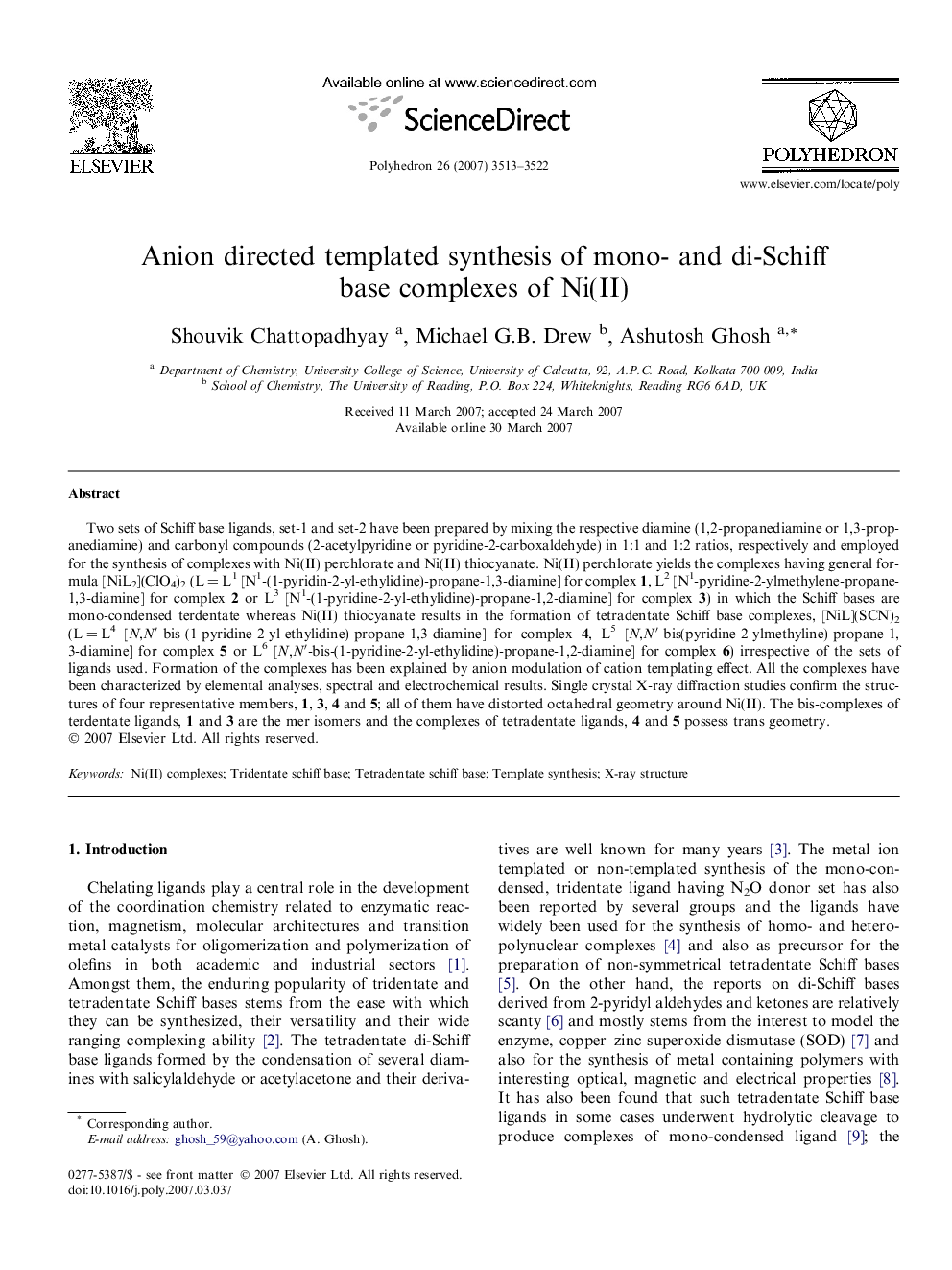| Article ID | Journal | Published Year | Pages | File Type |
|---|---|---|---|---|
| 1339728 | Polyhedron | 2007 | 10 Pages |
Two sets of Schiff base ligands, set-1 and set-2 have been prepared by mixing the respective diamine (1,2-propanediamine or 1,3-propanediamine) and carbonyl compounds (2-acetylpyridine or pyridine-2-carboxaldehyde) in 1:1 and 1:2 ratios, respectively and employed for the synthesis of complexes with Ni(II) perchlorate and Ni(II) thiocyanate. Ni(II) perchlorate yields the complexes having general formula [NiL2](ClO4)2 (L = L1 [N1-(1-pyridin-2-yl-ethylidine)-propane-1,3-diamine] for complex 1, L2 [N1-pyridine-2-ylmethylene-propane-1,3-diamine] for complex 2 or L3 [N1-(1-pyridine-2-yl-ethylidine)-propane-1,2-diamine] for complex 3) in which the Schiff bases are mono-condensed terdentate whereas Ni(II) thiocyanate results in the formation of tetradentate Schiff base complexes, [NiL](SCN)2 (L = L4 [N,N′-bis-(1-pyridine-2-yl-ethylidine)-propane-1,3-diamine] for complex 4, L5 [N,N′-bis(pyridine-2-ylmethyline)-propane-1,3-diamine] for complex 5 or L6 [N,N′-bis-(1-pyridine-2-yl-ethylidine)-propane-1,2-diamine] for complex 6) irrespective of the sets of ligands used. Formation of the complexes has been explained by anion modulation of cation templating effect. All the complexes have been characterized by elemental analyses, spectral and electrochemical results. Single crystal X-ray diffraction studies confirm the structures of four representative members, 1, 3, 4 and 5; all of them have distorted octahedral geometry around Ni(II). The bis-complexes of terdentate ligands, 1 and 3 are the mer isomers and the complexes of tetradentate ligands, 4 and 5 possess trans geometry.
Graphical abstractReaction of Schiff base ligands derived from diamine (1,2-propanediamine or 1,3-propanediamine) and carbonyl compounds (2-acetylpyridine or pyridine-2-carboxaldehyde) separately with Ni(II) perchlorate and Ni(II) thiocyanate reveals that the perchlorate salt yields the bis-complexes of mono-condensed terdentate ligands having general formula [NiL2](ClO4)2 whereas the thiocyanate salt results in the formation of tetradentate Schiff base complexes, [NiL](SCN)2. Formation of the complexes has been explained by anion modulation of cation templating effect.Figure optionsDownload full-size imageDownload as PowerPoint slide
